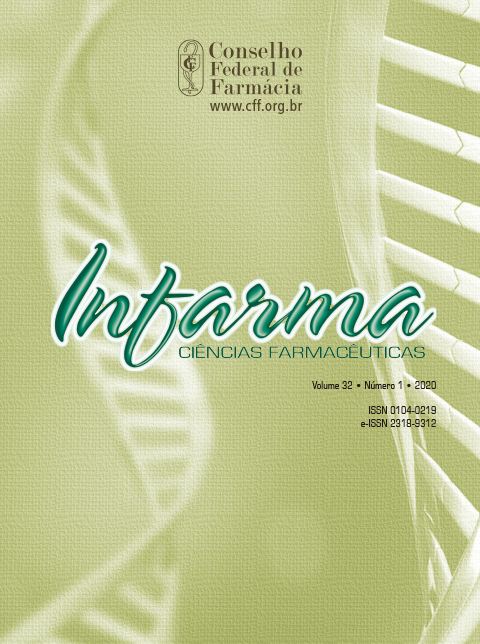PROCESSO DE PADRONIZACAO DE MEDICAMENTOS ORAIS PARA ADMINISTRACAO VIA SONDA ENTERAL PARA HOSPITAL UNIVERSITÁRIO MATERNO‑INFANTIL
DOI:
https://doi.org/10.14450/2318-9312.v32.e1.a2020.pp30-40Palavras-chave:
farmacotécnica, hospital, segurança do pacienteResumo
A adaptação de formas farmacêuticas orais para uso via sonda enteral é necessária diante da escassez de formulações, especialmente para pacientes pediátricos, pacientes com transtornos de deglutição e pacientes críticos internados em UTI. É necessária a avaliação do farmacêutico quando há necessidade de adaptar forma farmacêutica, para constatar se realmente é permitido fazê‑lo, se não há alternativa terapêutica disponível e, em caso de viabilidade de adaptação, realizar o procedimento. O estudo teve como objetivo a avaliação do processo de padronização de medicamentos administrados via oral que podem ser adaptados para administração via sonda enteral. Para isso, foi utilizada como base a lista de padronização de medicamentos da Maternidade Escola Januário Cicco e a consulta foi realizada nas fontes Micromedex, Dynamed, Handbook of Drug Administration via Enteral Feeding Tubes e Drugs.com. Das 68 formas farmacêuticas orais (63 princípios ativos), 76,47% podiam ser adaptadas e administradas por sonda enteral e para 13,23% não foram encontrados dados na literatura acerca da viabilidade da adaptação destas formas farmacêuticas. Além disso, 23,80% dos medicamentos possuíam vias alternativas de administração. Foram encontradas 46 interações medicamento‑alimento, sendo 15,22% da categoria Importante, 63,04% Moderada e 21,74% Menor/Secundária. As informações sobre adaptações de formas farmacêuticas para administração via sonda enteral ainda são escassas na literatura, sendo, portanto, imprescindível a compilação das informações disponíveis acerca do tema, uma vez que a não observância destas pode comprometer a segurança do paciente.
Downloads
Publicado
Como Citar
Edição
Seção
Licença
Autores que publicam nesta revista concordam com os seguintes termos:- Autores mantém os direitos autorais e concedem à revista o direito de primeira publicação, com o trabalho simultaneamente licenciado sob a Licença Creative Commons by NC ND que permite o compartilhamento do trabalho com reconhecimento da autoria e publicação inicial nesta revista.
- Autores têm autorização para assumir contratos adicionais separadamente, para distribuição não-exclusiva da versão do trabalho publicada nesta revista (ex.: publicar em repositório institucional ou como capítulo de livro), com reconhecimento de autoria e publicação inicial nesta revista.
- Autores têm permissão e são estimulados a publicar e distribuir seu trabalho online (ex.: em repositórios institucionais ou na sua página pessoal) a qualquer ponto antes ou durante o processo editorial, já que isso pode gerar alterações produtivas, bem como aumentar o impacto e a citação do trabalho publicado (Veja O Efeito do Acesso Livre).


